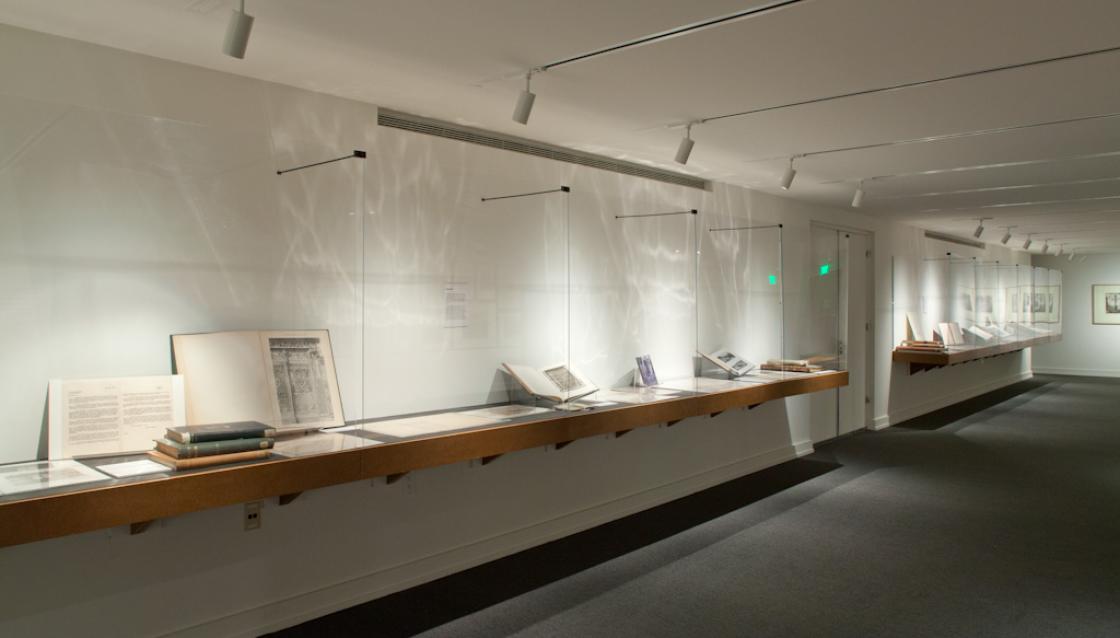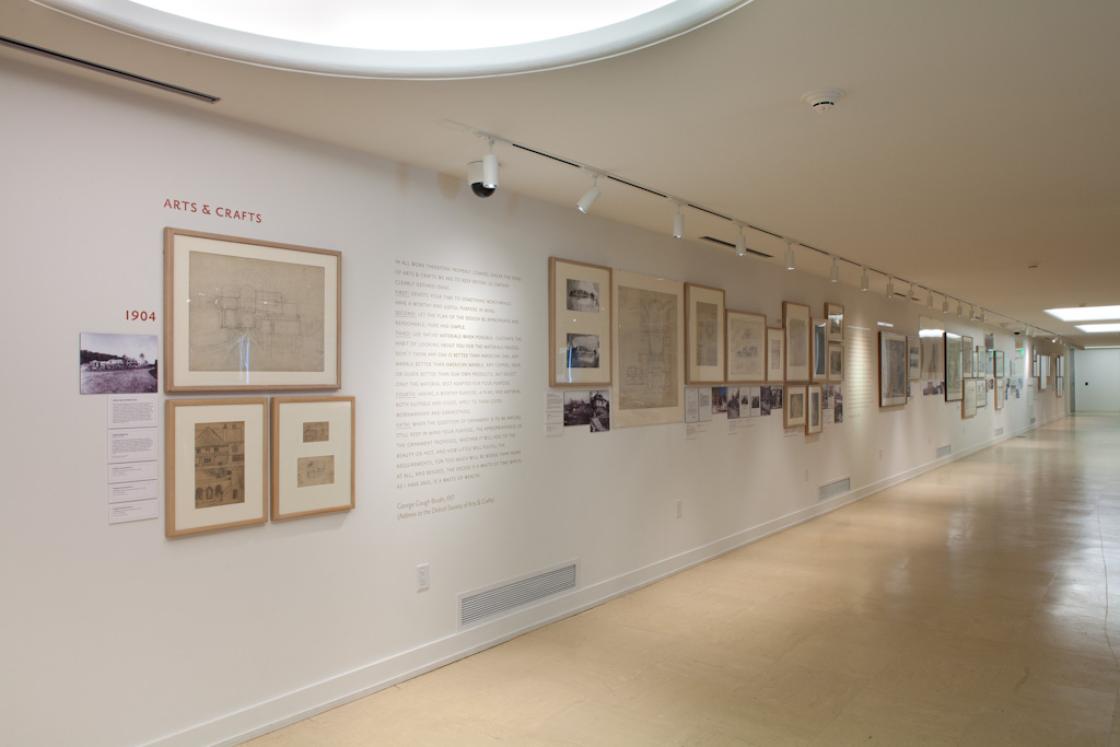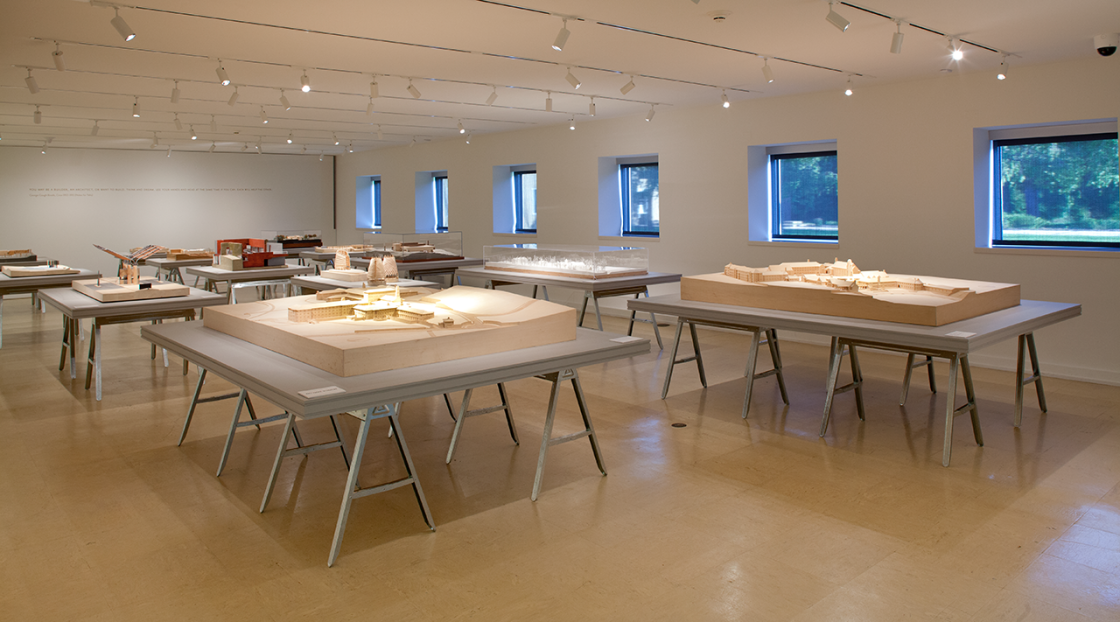VISION AND INTERPRETATION: BUILDING CRANBROOK, 1904-2012
Exhibition Dates: June 16, 2012 through March 24, 2013
Opening Reception: Friday, June 15, 2012
Location: Cranbrook Art Museum, deSalle and Lower Main Galleries
With models and drawings and rich archival materials, this exhibition presented the architectural legacy of Cranbrook as an artistic narrative emerging from the creative beliefs of George Gough Booth (1864-1949), Detroit newspaper magnate and cultural philanthropist and, along with his wife Ellen Scripps Booth, Cranbrook’s founder. An amateur architect himself, Booth’s vision was realized through early collaborations with renowned architects Albert Kahn and Eliel Saarinen and has more recently been interpreted by world-class designers including Rafael Moneo and Steven Holl. The Cranbrook story includes the architects, designers, and gardeners working for the Cranbrook Architectural Office, Landscape and Grounds, and Capital Projects who have acted as institutional “glue” in the construction and maintenance of the campus over its century-long history. The resulting National Historic Landmark site features newer structures operating both in juxtaposition and in sympathetic response to the earlier buildings in an integrated and innovative architectural whole.

The exhibition was divided into two sections. The “Vision” section (displayed in the deSalle Gallery) presented George Booth’s aesthetic interests with a selection of his sketches and letters, and a sampling of the architectural materials he accumulated. Booth’s purchases include superb collections of rare books and nineteenth-century etchings procured as didactic tools for Cranbrook Academy of Art students. Offering a true visual feast, the themes depicted ranged from Venetian palazzo elevations to English gardens and Gothic cathedral interiors. The influence of these ideas was seen clearly in Booth’s own sketches for his home and educational community. Wielded by a dedicated patron who was actively involved in every aspect of design to an astonishing degree, these collections had direct implications for how Cranbrook ultimately was realized in its built form.

The “Interpretation” section presented the different phases of building at Cranbrook starting with the Arts & Crafts and Saarinen’s Cranbrook and continuing through Cranbrook Contemporary. The timeline (in the Colonnade Gallery along the Lower Main Gallery) mixed stunning art objects, including Eliel Saarinen’s rendering of the Cranbrook Art Museum Peristyle, with historic letters and constructions photographs, working sketches, and building blueprints. This collage of materials, foraged from the collections of Cranbrook’s Art Museum, Archives, Cultural Properties and Capital Projects, spoke to Cranbrook’s Arts and Crafts heritage by highlighting the different ways that architecture is represented and explored during the design process. The presentation of models (also in the Lower Main Gallery) offered clear evidence of Cranbrook’s tradition of “making” and the many hands that have worked to create a place of beauty and distinction.

A collaboration between the the Cranbrook Center for Collections and Research and Cranbrook Art Museum, Vision and Interpretation was curated by the Center’s first Collections Fellow, Dr. Deirdre Christianson Hennebury, with generous assistance from the Center’s Head Archivist, Leslie Edwards, and the staff of Cranbrook Archives. Marking the first exhibition to have emerged from Cranbrook’s new Center for Collections (which was founded in 2011 and opened in 2012), this project brought together the diverse and rich collections of the Cranbrook Educational Community to illuminate a story of patronage and a commitment to quality in design.
The following quotes by Cranbrook’s founder, George Gough Booth, were incorporated into the exhibition wall text.
…as a youngster both my mother and father helped me to the habit of seeing – my roving eyes gathering much wherever I went, I saw gardens and buildings, and many of the larger and greater things but I learned to look alertly for little things of every kind…to do this is to quickly see much at a glance.
(George Gough Booth, 1939)
In all work therefore properly coming under the head of Arts & Crafts we are to keep before us certain clearly defined ideas.
FIRST: Devote your time to something worthwhile. Have a worthy and useful purpose in mind.
SECOND: Let the plan of the design be appropriate and reasonable, pure and simple.
THIRD: Use native materials when possible. Cultivate the habit of looking about you for the materials needed. Don’t think any oak is better than American oak, any marble better than American marble, any copper, iron or silver better than our own products. But select only the material best adapted for your purpose.
FOURTH: Having a worthy purpose, a plan, and material both suitable and good, apply to them good workmanship and earnestness.
FIFTH: When the question of ornament is to be applied, still keep in mind your purpose, the appropriateness of the ornament proposed, whether it will add to the beauty or not, and how little will fulfill the requirements, for too much will be worse than none at all, and besides, the excess is a waste of time which, as I have said, is a waste of wealth.
(George Gough Booth, 1917, Address to the Detroit Society of Arts & Crafts)
I had a building drawn on my own private map that I worked on called “Academy of Art.” I did not know what that was to be, and I found very few people in the country really knew what an academy of art should be. But that was the beginning of the thing, and when Mr. Saarinen was about to return to his homeland, I asked him if he might like to come back another year and help me try to find out what an academy of art should be. Well, Mr. Saarinen came back, and we tried to find out what an academy of art should be.
Mr. Saarinen’s mind ran strong to showing what it ought to be in architecture. I tell you confidently now that when I saw the development of the drawings, he did them out in Ann Arbor, and the wonderful model that Mrs. Saarinen had made, I was thoroughly alarmed. I put the model in the back room and locked it up. I was afraid some of my friends would see it and think I had gone crazy, that I had the cheek to do that, that I could ever do anything like that! It stayed there for quite a while. But the thing was working.
(George Gough Booth, 1940s)
We have blazed a new trail; it will be largely the work of others to extend, to widen and to improve it and make it into a highway on both sides of which may be reared lasting and beautiful edifices on a foundation which I trust will be found imperishable.
(George Gough Booth, 1927, Cranbrook School for Boys Dedicatory Exercises)
You may be a builder, an architect, or want to build. Think and dream. Use your hands and head at the same time if you can. Each will help the other.
(George Gough Booth, circa 1902-1915, Notes for Talks)
…there is a spirit of fertility, which through imaginative treatment and prophetic experiment will bring art forth to interpret itself and seed again. It will be further invigorated by the conviction that art belongs to each age anew and that there is something for this day to create as its record, monument and inspiration to another generation.
(George Gough Booth, Undated)
PHOTO CREDITS
Exhibition Photography by R. H. Hensleigh. Courtesy Cranbrook Art Museum.
